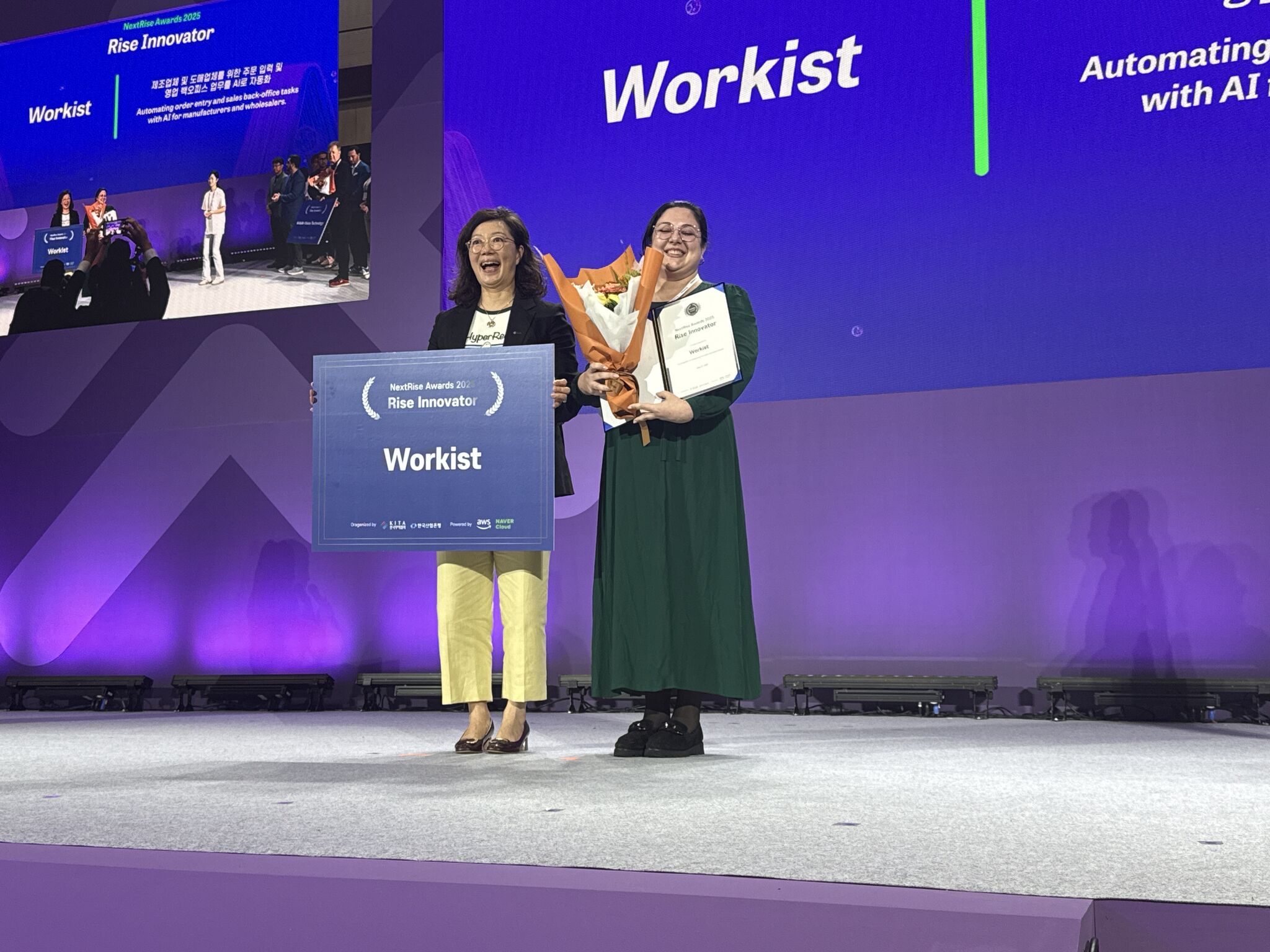Efficiency is key in today's fast-paced business world. Many companies are turning to technology to optimize their processes and gain a competitive advantage. One of these technologies is Optical Character Recognition (OCR). But is OCR alone enough to fully automate order entry and document processing? You can find the answer in this blog article.
We also explain how text recognition with OCR works, what its advantages and disadvantages are, and in which cases companies would be better off using a combination of artificial intelligence (AI) and OCR.
What is text recognition with OCR?
OCR stands for "Optical Character Recognition". The basic idea behind OCR is to identify text in images or documents and convert it into a digitized, machine-readable form that can be further processed.
The technology has developed steadily over the years and is now an integral part of many business processes. It helps to drive digitalization in the company. Text recognition with OCR not only saves time and costs, but also reduces errors that can occur during manual data entry. Documents are processed more efficiently overall (more on this later).
But how exactly does OCR software work? And what can it be used for in everyday life? To answer these questions, let's first have a look at the basic principles of text recognition using OCR.
How does OCR software work?
OCR software recognizes printed or handwritten text in documents and converts it into digital characters. To do this, the document is first scanned so that it is available digitally as a PDF or JPEG. The program then analyses the document structure pixel by pixel and identifies the characters. It recognizes words, numbers, spaces, breaks and headings individually until the entire text has been extracted from the scanned document. The recognized data is then converted into a machine-readable text file.
To identify the characters, the software simply analyses the differences in brightness in the layout of the document. Depending on the quality of the image or document, this process is prone to errors. Difficulties can arise in particular with the recognition of white or coloured pixels or with complex fonts and handwriting.
OCR in everyday life
OCR technology is now widely used in everyday life. For example, it is used in online shopping to extract product data from images and feed it into databases. It is also used for translations by recognizing text in images and preparing it for translation. Another interesting application is traffic sign recognition in vehicles, where OCR helps to improve road safety.
These examples show how useful OCR technology can be in everyday life. It makes many areas of our lives more efficient and easier through automation.
In everyday working life, OCR text recognition is mostly used to convert paper documents (or inconsistently formatted documents) into standardized, editable text files - for example, when recording orders and purchase orders or processing invoices.
Text recognition with OCR in companies: Advantages and disadvantages
OCR has a number of advantages when it comes to the pure digitalization of documents. These include, among others:
- Fast capture of documents
- Improved data quality compared to manual input
- Increased productivity
- More efficient document processing
- Time savings compared to manual input
- Lower costs
However, when it comes to automating entire processes - such as order entry - and processing a wide range of documents, there are some things that OCR alone cannot do. Probably the biggest limitation of text recognition is that the technology can only recognize and extract data, but not interpret it. There is no understanding of the recognized data in the respective context. For example, it remains unclear during document processing whether a sequence of numbers in an order document is an article number, a tax number or the postcode of the customer's delivery address. The data can therefore only be processed automatically to a limited extent. Humans are still needed as translators, so the degree of automation is very low with pure OCR text recognition.
Other disadvantages are also:
- Pure OCR text recognition is prone to errors.
- The accuracy depends heavily on the quality of the image or document.
- The time saving is small, and the human operator still has to intervene manually.
- The use of OCR text recognition is not always cost-effective.
Template-based systems - i.e. a combination of OCR technology and customized templates - do make it possible to interpret the data and achieve a slightly higher degree of automation. However, these template-based OCR solutions are associated with a very high initial training effort. For order entry, for example, a document layout must be entered into the software for each customer so that the software knows where to find which information on the document. As long as all of a customer's documents correspond exactly to the specified layout, order entry works without human intervention. However, even the smallest deviations from the template, such as a two-page order instead of a one-page order or additional delivery instructions, can mean that the extracted data can no longer be interpreted automatically. The order can then no longer be processed and transferred and employees have to intervene manually. Basically, the manual effort involved in (template-based) OCR solutions is therefore only shifted from the actual document processing to the maintenance of templates and the correction of errors.
Overall, OCR text recognition is therefore suitable for the digitization of documents, but not for the complete automation of processes. To really realize all the benefits of process automation, companies should move to a higher technological level and consider AI. Let's take a closer look at why and how this might look.
AI in document processing

Artificial intelligence helps companies to optimize their business processes and make them more efficient. AI can also be used to process documents completely automatically. Here, AI enables an intuitive understanding of the documents, as would be the case with human processing. It analyses the context of the extracted data and can also make corrections.
This makes AI a much more effective solution for automated document processing. Like OCR solutions, AI solutions extract the information from images or documents - and can then also easily analyse the extracted text, make decisions and process the data further.
No templates or time-consuming initial training are required. The AI solution has already been trained using a large data set. If we take order entry as an example, all data points relevant to order processing are annotated in training documents in this data set. The AI uses this labelled information to develop a general understanding of the documents. It can then interpret them similarly to a human. The AI recognizes the relevant data points in the documents largely independently, regardless of layout or language.
Many AI solutions use OCR technology in the background - including Workist, for example. The AI-based software processes orders automatically with little effort. Incoming documents are simply forwarded to Workist. A wide range of formats (e.g. PDF files, Excel, free text emails) can be processed. The software recognizes the documents intuitively and then automatically extracts all relevant data - regardless of language or layout. All information from the documents is also validated against the company's master data before it is forwarded to the ERP system. This ensures that everything is extracted without errors.
Read more about how Workist works on our website.
Advantages of automated document processing with AI
All in all, using AI for document processing offers companies a number of advantages, including:
- Intuitive document understanding
- Automated processing of documents
- Minimized error rates and high accuracy
- High time and cost savings
- Flexibility and scalability
- Continuous learning
- Fast and uncomplicated set-up
Conclusion
To summarize: Text recognition with OCR alone is not enough to automate complex processes such as order entry. Although OCR technology can be used to digitize text from documents and images, the data cannot be interpreted and further processed without human intervention. Although template-based OCR solutions enable approximate interpretations of data and a certain degree of automation, they are also error-prone, complex, time-consuming and cost-intensive.
In order to realize the full potential of process automation and remain competitive in the future, modern AI software is clearly the better alternative for document processing. AI takes over where OCR text recognition reaches its limits. Processes such as order entry can thus be fully automated. Companies save time, minimize errors and work even more cost-efficiently in future.
Frequently asked questions about text recognition with OCR
What is meant by OCR?
OCR (Optical Character Recognition) is a technology for automatically recognizing text in digital documents. OCR software can be used to convert scanned documents or images into editable and searchable files.
What are the benefits of OCR for companies?
OCR technology offers companies numerous advantages, such as the digitization of printed documents and their improved accessibility for employees, which ultimately leads to time and cost savings. Combined with AI, the automatic processing of documents is also possible.
What are the limitations of text recognition using purely OCR?
OCR technology can be prone to errors, especially with poor quality scans or complex typefaces, and if documents deviate from the defined layout, this also leads to problems. New languages may also not be understood immediately. In addition, OCR software extracts text from documents or images without understanding the context. The extracted data still has to be interpreted by humans and transferred using copy and paste.

%201.jpg)
